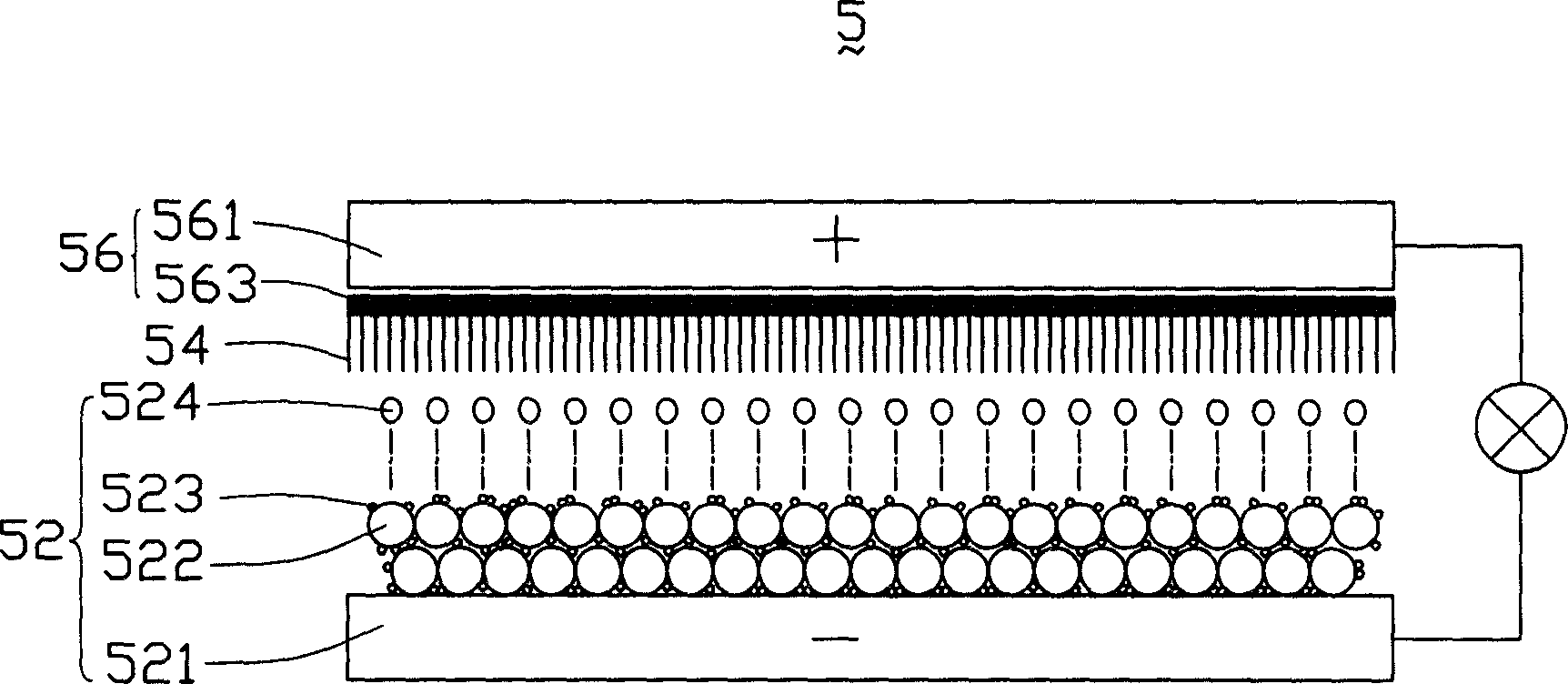Dye sensitized solar batter and its electrode
A solar cell and dye-sensitized technology, applied in the field of dye-sensitized solar cells, can solve the problems of low electron mobility and lower photoelectric conversion rate, and achieve the effects of increasing conductivity, accelerating migration rate, and improving photoelectric conversion performance
- Summary
- Abstract
- Description
- Claims
- Application Information
AI Technical Summary
Problems solved by technology
Method used
Image
Examples
Embodiment Construction
[0014] The present invention will be further described in detail below in conjunction with the accompanying drawings.
[0015] see figure 1 , The dye-sensitized solar cell 5 provided by the present invention includes: a working electrode 52 , a counter electrode 56 and an electrolyte 54 . Wherein, the electrolyte solution 54 is located between the two electrodes 52 , 56 .
[0016] The working electrode 52 includes: a transparent conductive substrate 521 , a semiconductor nanocrystal film 522 and a dye layer 524 formed on the semiconductor nanocrystal film. Wherein, the semiconductor nanocrystal film 522 includes a plurality of conductive particles 523 . The transparent conductive substrate 521 can be fluorine-doped tin dioxide conductive glass. The semiconductor nanocrystal film 522 is formed on the transparent conductive substrate 521 by coating methods such as coating and sputtering, and its thickness can be 1-50 microns. The semiconductor nanocrystalline film 522 mainly...
PUM
| Property | Measurement | Unit |
|---|---|---|
| thickness | aaaaa | aaaaa |
Abstract
Description
Claims
Application Information
 Login to View More
Login to View More - R&D
- Intellectual Property
- Life Sciences
- Materials
- Tech Scout
- Unparalleled Data Quality
- Higher Quality Content
- 60% Fewer Hallucinations
Browse by: Latest US Patents, China's latest patents, Technical Efficacy Thesaurus, Application Domain, Technology Topic, Popular Technical Reports.
© 2025 PatSnap. All rights reserved.Legal|Privacy policy|Modern Slavery Act Transparency Statement|Sitemap|About US| Contact US: help@patsnap.com

